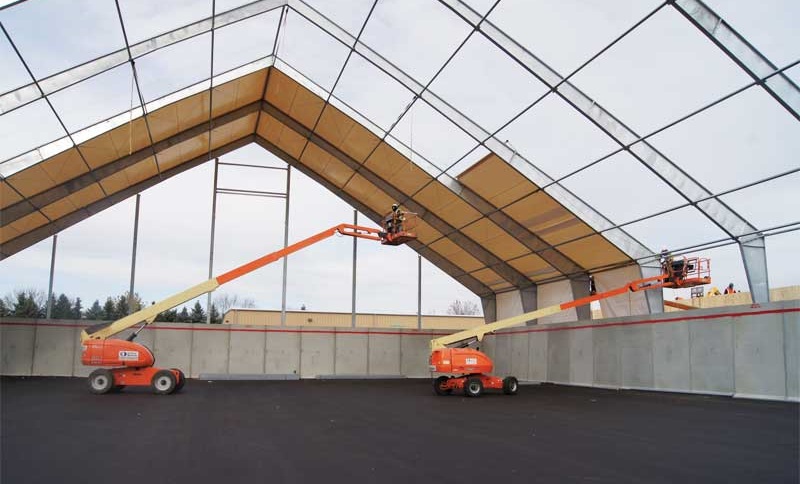Top 5 Facts to Know About Fabric Covered Buildings
You must have seen strong and lightweight membranes being used over a framework in order to give the structure a proper shape. This concept has been in use since centuries. In the good old days, people used to make teepees and yurts in this similar manner.
When you talk about engineered fabric building the same principle is used. A variety of engineered fabric buildings are used in this modern era to house athletic facilities, industrial projects, as well as, entertainment centers.
These fabric covered buildings are advantageous in a number of ways when compared with the conventional concrete and steel buildings.
5 Facts about Fabric Covered Buildings
Most of you may not know about the various facts about fabric buildings. Here are 5 crucial and good-to-know facts about fabric covered buildings from the Absolutely Covered company.
- Fabric Covered Buildings Can Be Used For Various Purposes: One of the best features of a fabric covered building is that it can easily be constructed to fulfill various purposes. These include mining operations, house industrial equipment, and aerospace projects. Just altering the peak heights and roof pitches of the building can make it suitable for any purpose.
- Highly Durable: The steel frame used to build a fabric covered building is the same one that is used in almost every type of building construction. Add to that, the ripstop fabric that will easily last for several decades. Combined they provide the same durability and strength to a building needed for any heavy industrial purpose.
- Energy Efficient: When it comes to the costs involved in cooling or heating a concrete and steel building, it is significantly high. However, when it comes to similar costs in terms of a fabric covered building, it is much lower. This is simply because the fabric material is non-conductive in a natural manner. During hot summer days, the interior of a fabric building will remain cool and vice versa on cooler days. The fabric used does not retain the heat from the sun. However, it does maintain the temperature inside better.
- Easy to Relocate and Setup On Different Foundations: When it comes to installing a fabric covered building, the time taken for the purpose is almost 3 times lesser than any conventional structure. Although these fabric structures are designed as portable, these are normally permanent. The fabric is also very easy to roll and move to another location.
- Recyclable and Sustainable: Majority of the materials that are used in a fabric covered building can easily be re-used. These buildings do contain recycled materials that can be recycled again and again. Once a fabric reaches the end of its life, the manufacturer of the fabric can help the customer find someone who can recycle the fabric membrane effectively. Most of the fabric last for a time period of around 20 years. However, there are some good quality ones that last for more than 20 years. Add to that the fact that polyethylene fabrics that are used in such structures provide a low toxin emission.




